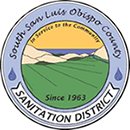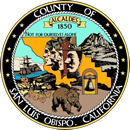The State Water Resources Control Board Waste Discharge Requirements (WDR) Orders No. 2006-0003-DWQ and WQ 2008-0002-EXEC require the South San Luis Obispo County Sanitation District (District) and it’s Member Agencies to prepare and implement a Fats, Oils, and Grease (FOG) program to reduce the amount of FOG discharged to the sanitary sewer system, because FOG was an identified problem in the District’s and Member Agencies’ sanitary sewer system.
The District adopted the Fats, Oils, and Grease Ordinance to comply with WDR Orders No. 2006-0003-DWQ and WQ 2008-0002-EXEC. The FOG Ordinance establishes the District’s legal authority to inspect, permit, and monitor food service establishments (FSEs) and require these facilities to install and maintain grease control devices (GCDs), such as grease traps and interceptors.
The primary objectives the FOG Ordinance are to:
- Prevent sanitary sewer overflows and blockages caused by FOG;
- Prevent the introduction of FOG into the District’s sanitary sewer system; and
- Protect the District’s sanitary sewer system, District personnel, and the public from sanitary sewer overflows and blockages caused by FOG.
To verify compliance, FSEs are inspected and permitted. The District inspects FSEs prior to issuing a permit and semiannually after issuing a permit, in order to ensure these facilities remain in compliance.
FOG Inspections
During a FOG inspection, Inspectors will check the following:
- FOG Permit is posted in public view.
- Maintenance records are available and remain onsite for three years.
- Solids and grease build-up does not exceed 25% of the total designed hydraulic depth of the grease control device.
- Grease barrels are stored on solid surface, are labeled, have a closed, tight-fitting lid.
- Detergent, chemicals, enzymes, and bacteria are not used to clean the grease control device.
- Downstream lines are clear of solidifying grease and solids.
- Effluent is clear of grease or solids pass through. For interceptors, the sample box, which typically has a square manhole, must have no grease or solids.
FOG Noncompliance Fees
FOG Ordinance Section 6.5 enables the District and the MAs to establish Noncompliance Fees:
…to compensate the District and its MAs for costs of additional inspections and follow-up, sampling, monitoring, laboratory analysis, treatment, disposal, and administrative processing incurred as a result of the continued noncompliance, and [the Noncompliance Fee] shall be in addition to and not in lieu of any penalties as may be assessed. Noncompliance Fees shall be in an amount adopted by resolution by the District or its MAs.
At the December 21, 2011 Board of Directors Meeting, the Board adopted Resolution 2011-295, which established a $125.00 Notice of Violation Fee in accordance with FOG Ordinance Article 6. Enforcement of the District’s FOG Ordinance will now comprise of the following:
If a FSE receives a violation during their semiannual FOG inspection, the FSE will receive a written Notice of Noncompliance and be re-inspected in thirty (30) days. No fee is charged with the Notice of Noncompliance. If the FSE passes their FOG re-inspection at the end of the thirty (30) day period, they will not be charged a Violation Fee. If the FSE does not pass this FOG re-inspection, they will be charged a $125.00 Notice of Violation Fee, receive a written Notice of Violation, and be re-inspected in fourteen (14) days.
The FOG Ordinance also provides the District with the legal authority to suspend and/or revoke FOG permits from chronic violators and dischargers who present imminent or substantial endangerment to the public’s health or welfare. Failure to comply with permit suspension or revocation may result in the immediate severance of the FSE’s sewer connection.
Current Compliance
There are 126 FSEs enrolled in the District’s FOG control program. Only one (1) of the 126 FSEs is out of compliance and does not have a grease control device installed, and seven (7) of the 126 FSEs with a grease control device received a violation during their last inspection. The figure below illustrates these compliance statistics.



